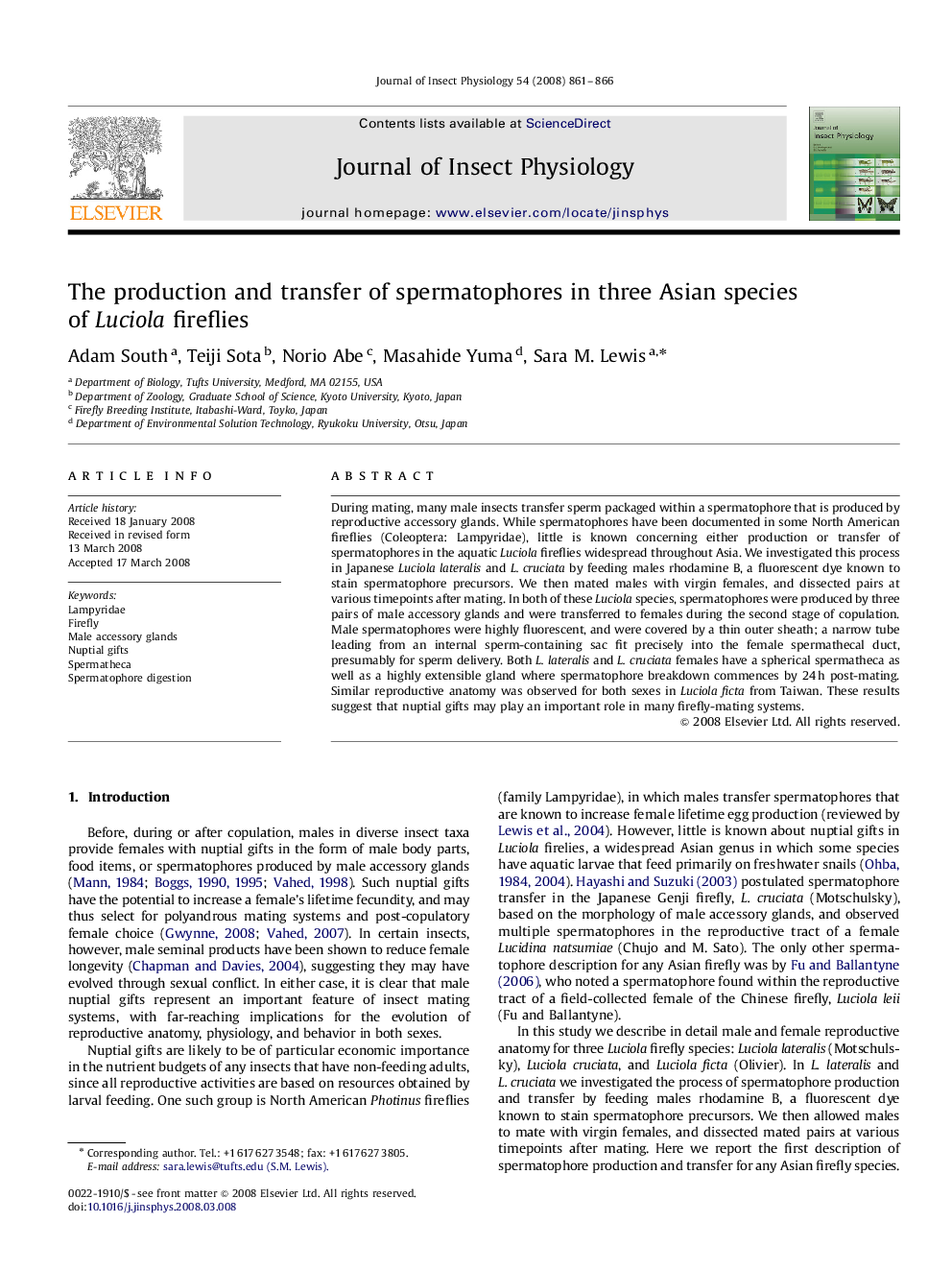| Article ID | Journal | Published Year | Pages | File Type |
|---|---|---|---|---|
| 2841352 | Journal of Insect Physiology | 2008 | 6 Pages |
During mating, many male insects transfer sperm packaged within a spermatophore that is produced by reproductive accessory glands. While spermatophores have been documented in some North American fireflies (Coleoptera: Lampyridae), little is known concerning either production or transfer of spermatophores in the aquatic Luciola fireflies widespread throughout Asia. We investigated this process in Japanese Luciola lateralis and L. cruciata by feeding males rhodamine B, a fluorescent dye known to stain spermatophore precursors. We then mated males with virgin females, and dissected pairs at various timepoints after mating. In both of these Luciola species, spermatophores were produced by three pairs of male accessory glands and were transferred to females during the second stage of copulation. Male spermatophores were highly fluorescent, and were covered by a thin outer sheath; a narrow tube leading from an internal sperm-containing sac fit precisely into the female spermathecal duct, presumably for sperm delivery. Both L. lateralis and L. cruciata females have a spherical spermatheca as well as a highly extensible gland where spermatophore breakdown commences by 24 h post-mating. Similar reproductive anatomy was observed for both sexes in Luciola ficta from Taiwan. These results suggest that nuptial gifts may play an important role in many firefly-mating systems.
